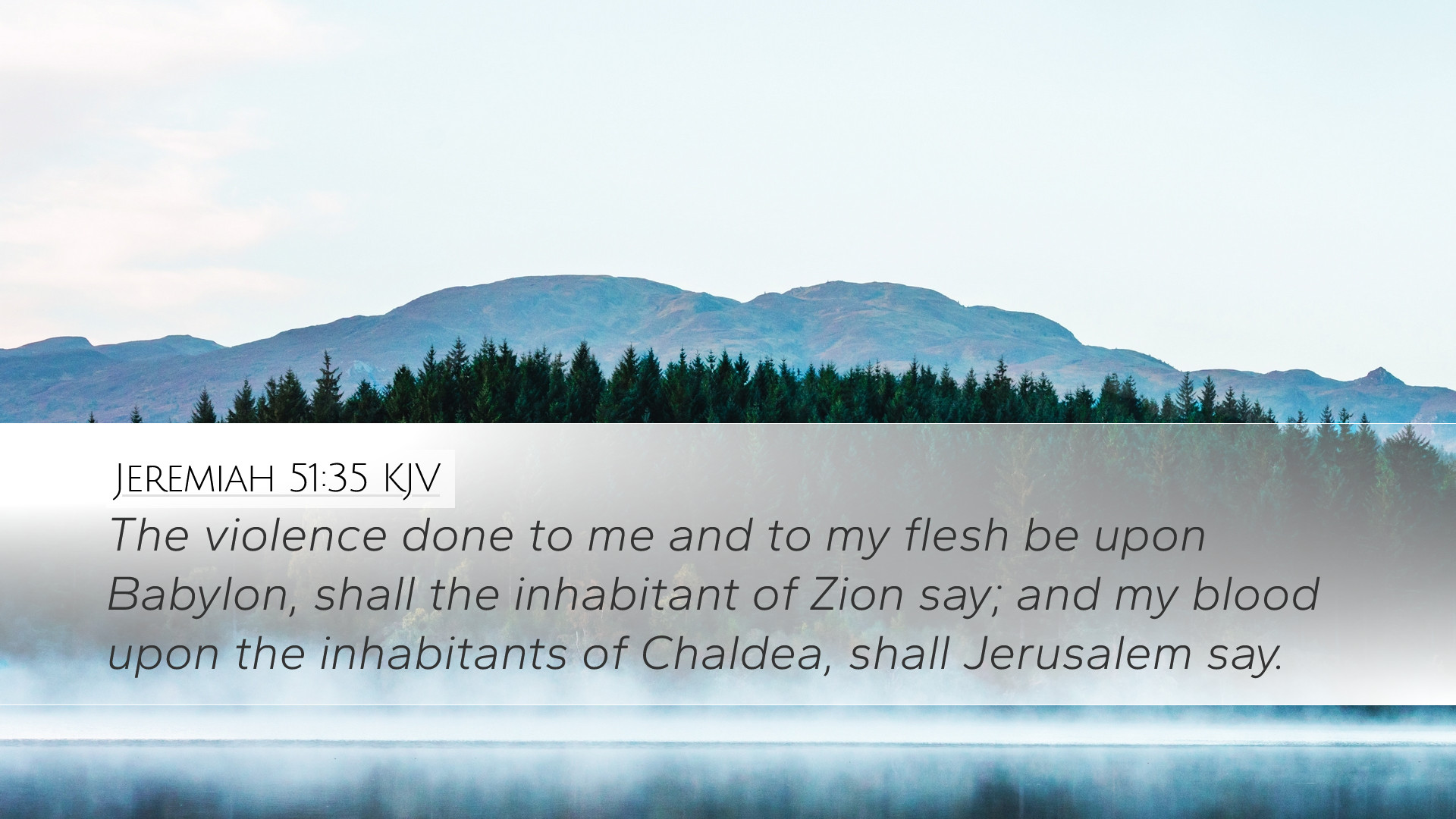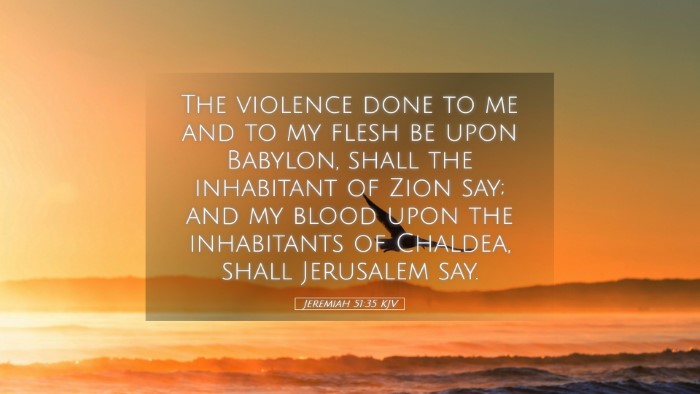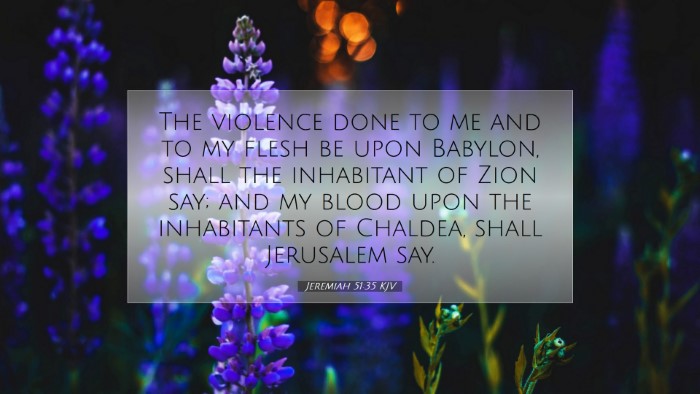Commentary on Jeremiah 51:35
Jeremiah 51:35 (KJV): "The violence done to me and to my flesh be upon Babylon, shall the inhabitant of Zion say; and my blood upon the inhabitants of Chaldea, shall Jerusalem say."
This passage expresses the deep anguish and desire for justice from Zion against Babylon. Let's explore this verse in detail through various public domain commentaries.
Overview of Context
The book of Jeremiah contains prophecies concerning Judah and Jerusalem, outlining their impending exile and the eventual downfall of Babylon. Chapter 51 particularly focuses on the judgment upon Babylon, showcasing God's sovereignty in recompensing evil and delivering His people.
Insights from Matthew Henry
Divine Justice: Henry emphasizes how the cry of Zion portrays a deep sense of betrayal and suffering inflicted by Babylon, paralleling the theme of retribution that is prevalent throughout scripture. He argues that the pain endured by the people of Jerusalem is not lost on the Lord, who promises to bring justice upon Babylon.
Symbolism of Zion and Babylon: For Henry, Zion represents not only a physical location but also a spiritual condition of the people of God. Conversely, Babylon epitomizes worldly oppression and idolatry. The plea for justice reflects the broader spiritual warfare inherent in the battle between God’s people and their oppressors.
Insights from Albert Barnes
Call for Retribution: Barnes notes that the inhabitants of Zion express a deep yearning for God's vindication. His commentary suggests that the verse serves as a powerful declaration of the inhabitants' desire for God to reckon with Babylon for the violence they inflicted upon them.
Emotional Appeal: Barnes also highlights the emotional intensity of this plea. This is not merely a legal claim for justice; it is a heartfelt cry laden with the collective memory of pain and suffering. The phrase "my blood" signifies the gravity of the injustices faced by the people and their desperate plea for accountability and restoration.
Insights from Adam Clarke
Historical Context: Clarke provides insight into the historical backdrop of this prophecy. He examines the tension between the Israelites and their captors, reinforcing that the violence done during their captivity weighs heavily upon the hearts of Zion's children.
Implications for Worship: From Clarke’s perspective, this verse also contains a liturgical aspect. In lamenting the destruction and violence against them, the people are also inviting God into their mourning, laying bare their wounds before Him. Clarke points to the necessity of lament in the worship life of God’s people, accentuating that what is brought to God in anguish is often met with divine compassion.
Theological Reflections
- God’s Sovereignty: These commentaries bring forth the notion that despite the tragic circumstances surrounding Jerusalem, God’s justice ultimately prevails. He does not overlook the injustices but works through them for His purpose.
- Collective Lament: The verse illustrates the communal aspect of faith. It is not merely the suffering of individuals but of an entire community seeking redress from their Sovereign.
- Hope amid Despair: Jeremiah’s prophetic utterances, while often bleak, are underscored by a hopeful anticipation that justice will be served. This ties into the greater narrative of redemption that runs through scripture.
Application for Today
The message encapsulated in Jeremiah 51:35 remains relevant today. For pastors and ministers, this verse serves as a reminder of the importance of addressing injustice in the world. Here are a few applications:
- Preaching on Justice: This verse can be used as a basis for sermons focusing on God’s commitment to justice and how believers are called to advocate for the oppressed in society.
- Lament in Worship: Incorporating elements of lament in worship services can help congregations process pain and injustice, reflecting the heart of God in their communal experiences.
- Hopeful Anticipation: Teaching that even in suffering, God is present and working can encourage faith communities to maintain hope and resilience in the face of adversity.
Conclusion
Jeremiah 51:35 stands as a testament to the human experience of suffering and the divine call for justice. By examining the insights from esteemed commentators like Matthew Henry, Albert Barnes, and Adam Clarke, we glean profound truths about God’s nature, the importance of lament, and the hope that sustains believers in trials. This passage invites us to articulate our pain and seek God's involvement as we navigate the complexities of a world marked by violence and injustice.


